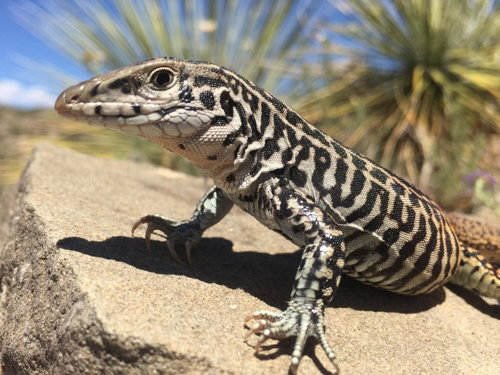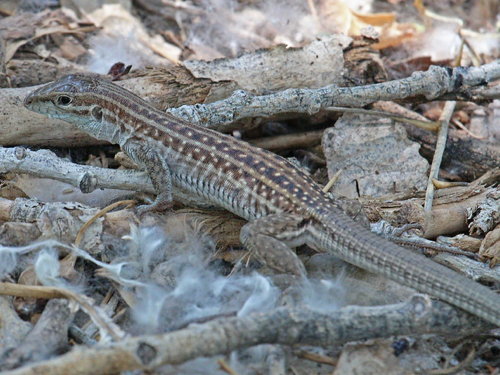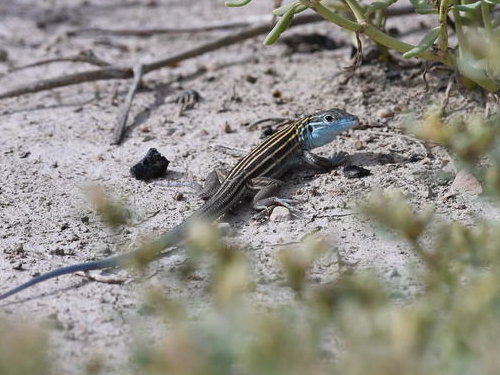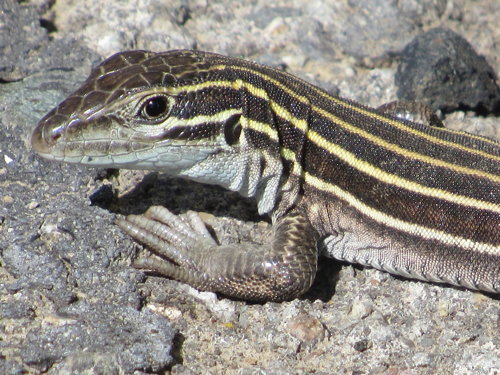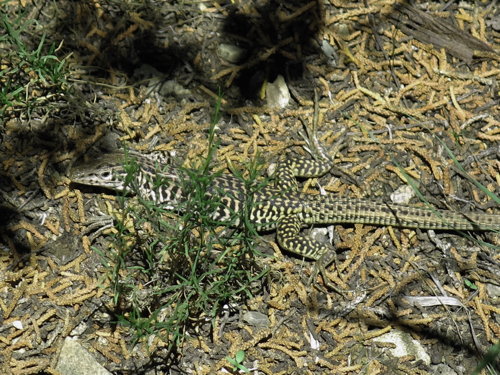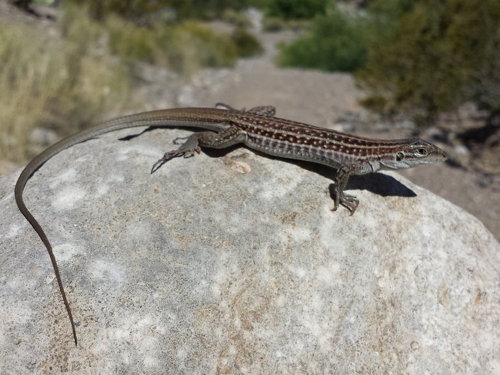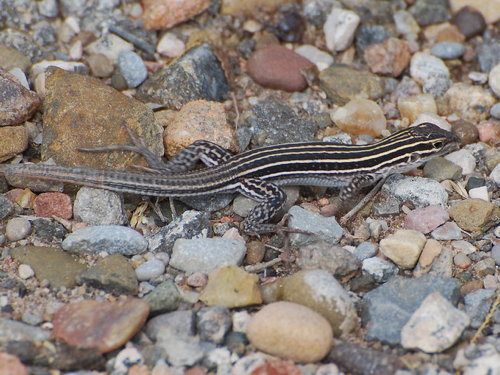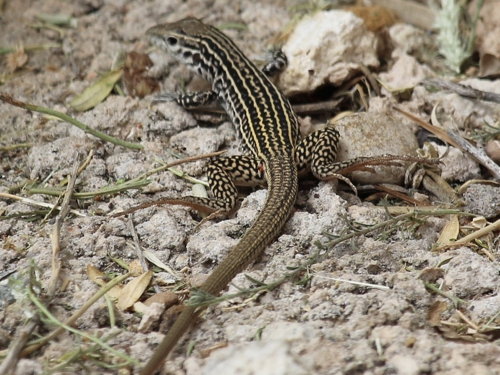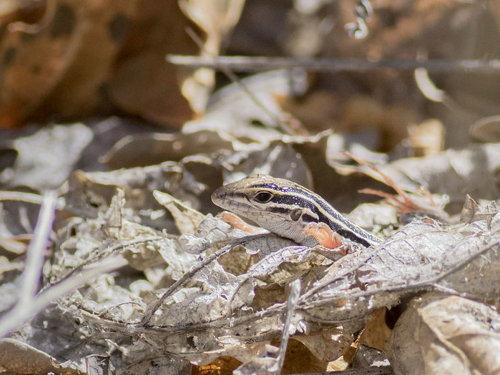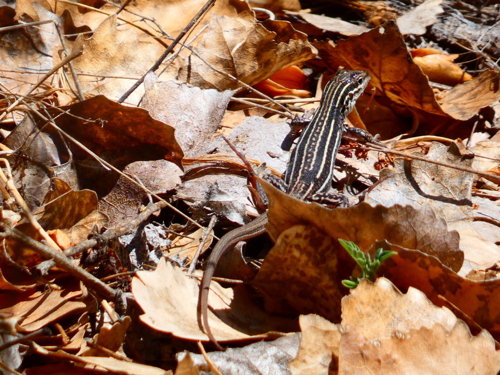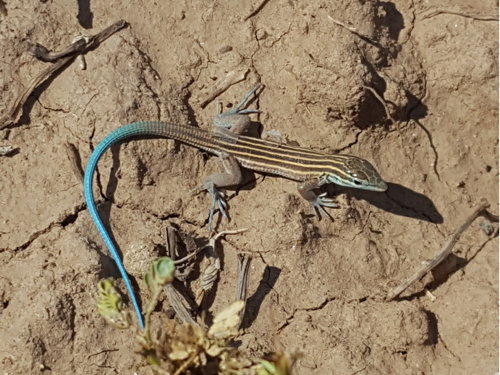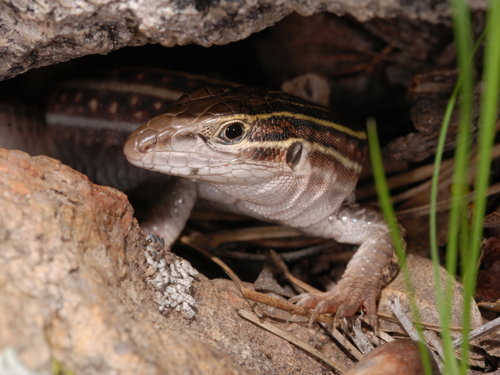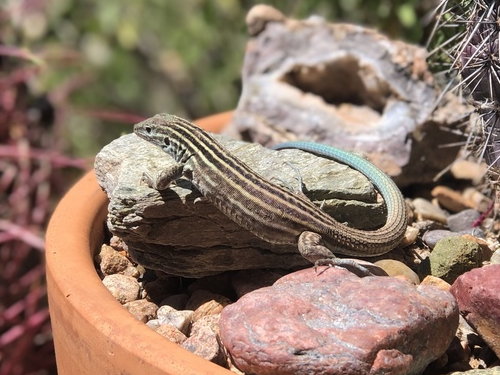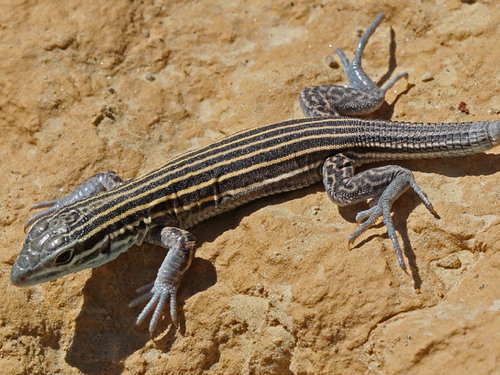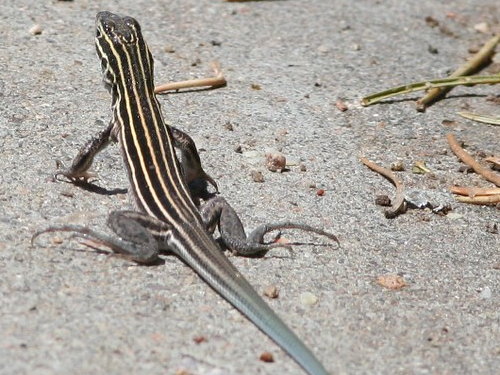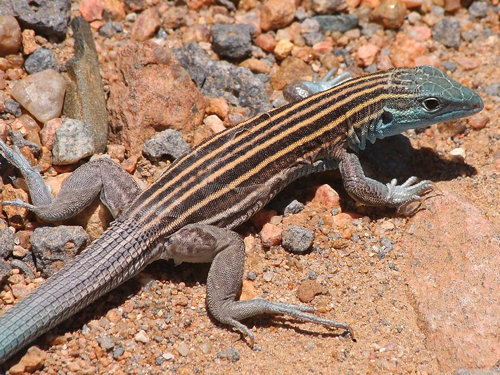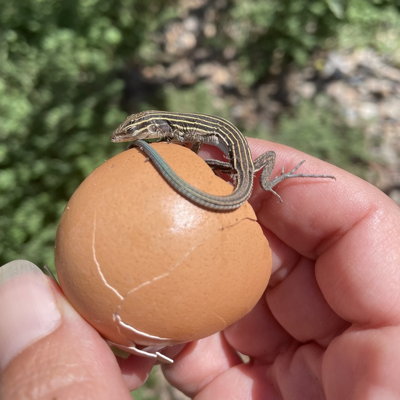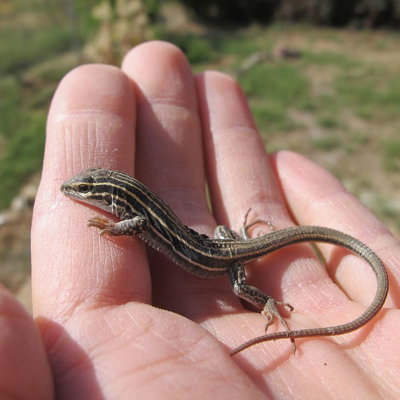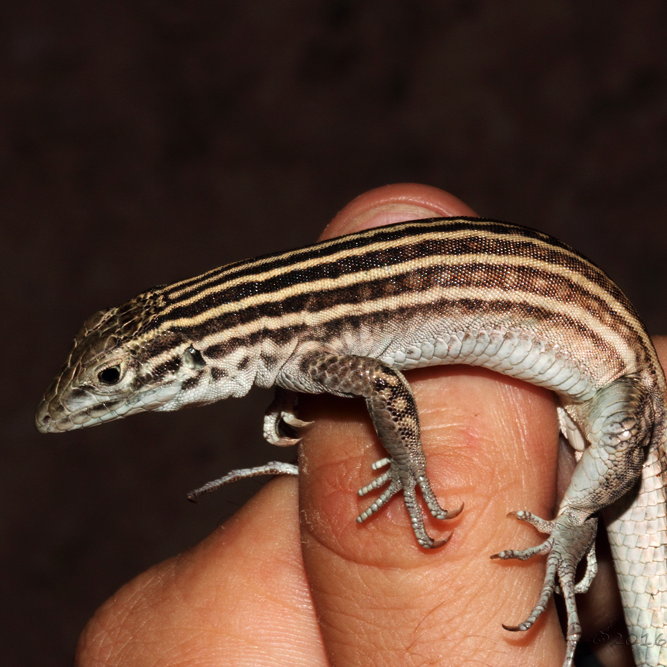Whiptails
Genus: Aspidoscelis
Type: Reptitle
Family: Teiidae (Whiptails and Tegus)
Size: 6.5 to 15.5 inches length
Weight: under an ounce
Life Span:about 4 years
Physical Description
There are five different species of whiptail common in the local Los Alamos area (Aspidoscelis exsanguis – Chihuahuan spotted, Aspidoscelis tesselatus – common checkered, Aspidoscelis inornatus – little striped, Aspidoscelis neomexicanus – New Mexican, and Aspidoscelis velox – plateau striped).
Whiptails are slender lizards with pointed snouts and exceptionally long tails. They can be distinguished from other lizards by crosswise rows of large rectangular scales on the underside and small granular scales above. There are five different species of whiptail common in the local area (Aspidoscelis exsanguis – Chihuahuan spotted, Aspidoscelis tesselatus – common checkered, Aspidoscelis inornatus – little striped, Aspidoscelis neomexicanus – New Mexican, and Aspidoscelis velox – plateau striped).
Whiptails tend to have muted colors on their bodies and different species can be distinguished by markings on their backs (see photos). Chihuahuan spotted whiptails are the largest in the area. The blue coloring on some of the species is bright in juveniles but fades with age.
- Chihuahuan Spotted – reddish-brown with 6 light-colored stripes and spots between the stripes
- Common Checkered – variable base color with brown/black blotches or checkering
- Little Striped – brown/black with 6 yellow stripes and a light blue underside and tail
- New Mexican – black with 7 pale yellow stripes, spots between the stripes, and a pale blue underside and tail
- Plateau Striped – brown/black with 6 or 7 pale yellow stripes and a pale blue tail
Chihuahuan Spotted
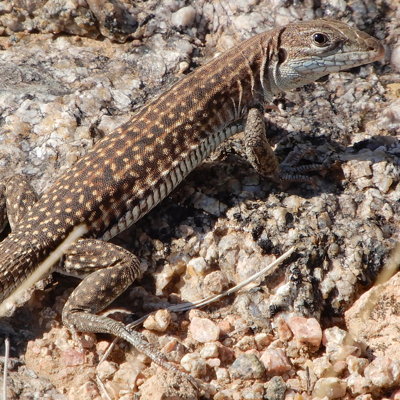
Common Checkered
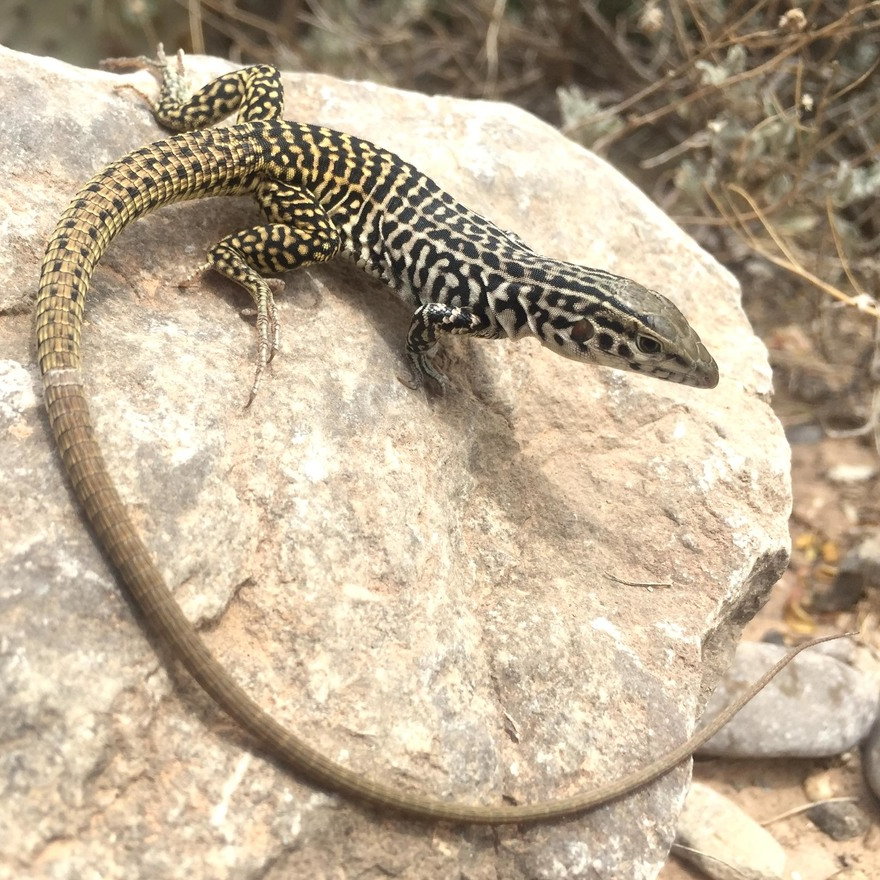
Little Striped
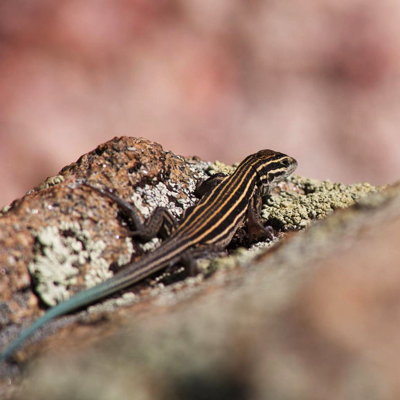
New Mexican

Plateau Striped
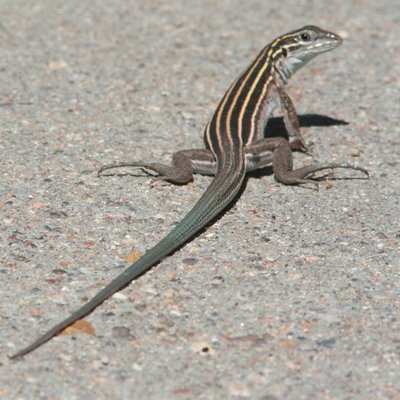
Range and Habitat
Whiptails can be found throughout most of the southwestern US and northern Mexico. The ranges of individual species are usually limited to certain regions but overlap considerably with each other.
Whiptails are most commonly found in and around dense vegetation. They avoid spending time in the open.
Diet
Whiptails primarily eat insects and other arthropods such as grasshoppers, beetles, butterflies, moths, spiders, and scorpions. However, they will eat eggs as well as small reptiles and birds. These lizards do not require permanent water.
Behavior and Social Life
Whiptails are all terrestrial and diurnal, moving around to find food, mates, and nesting grounds. They are foragers with higher metabolic rates compared to other lizard species. They use chemical, visual, tactile, acoustic, and olfactory senses to perceive their environment. They can even detect underground predators or prey from above ground.
When pursued by a predator, a whiptail can drop part of its tail in a process known as autotomy. The muscles in the dropped tail continue to contract in order to distract the predator, allowing the individual to escape. The tail will grow back in a few weeks.
Common activities for whiptails include climbing, burrowing, and basking. They seek shelter in a burrow during the night and emerge in the morning to bask in the sun. During warmer months, lizards spend more time trying to avoid overheating. Whiptails are not social and only interact with each other during the mating season.
vootrivite
Life Cycle
The local whiptail species are female only with no known males. These whiptails reproduce by a process known as obligate parthenogenesis, meaning they reproduce without involving a male. Research has shown that the lizards that reproduce in this manner start the reproductive process with twice the number of chromosomes as their sexually reproducing cousins. They then pair these chromosomes in a way to ensures genetic diversity in the offspring. Therefore the offspring are not true clones.
Each female lays up to four unfertilized eggs in mid-summer. The eggs hatch approximately eight weeks later. Juveniles grow to full size at a rate of about 2 inches per month.
Ecological Role
Whiptails primarily fill the ecological role of the insectivore, keeping arthropod populations in check. In turn, they serve as prey for hawks, coyotes, foxes, snakes, and other lizard species.
Interactions With Humans
Whiptails can be kept as pets and are traded at shows and sold in pet shops. There is no known negative impact of whiptails on humans.
Interesting Facts
- The genus name Aspidoscelis literally means “shield-leg” from the Ancient Greek.
- Whiptails are very strong and can catch and feed on small mammals and birds bigger than they are.
- Whiptails have very sharp teeth.
- These lizards have a keen sense of smell but sample the air for smells with a forked tongue like a snake.
- Long toes let whiptails run quickly on loose sand and soil.
- A whiptail can use its sharp claws to dig up burrowing insects.
- If pursued by a predator, whiptails will eventually seek refuge in a burrow.
- Like most other lizards, whiptails can see in color.
- A whiptail’s tail is longer than the length of its head and body together.

